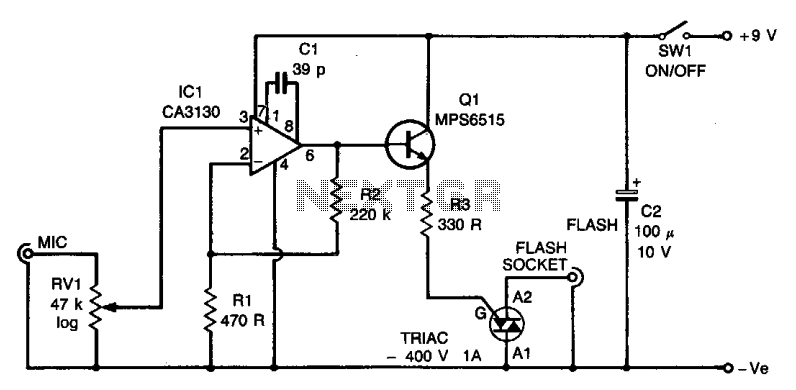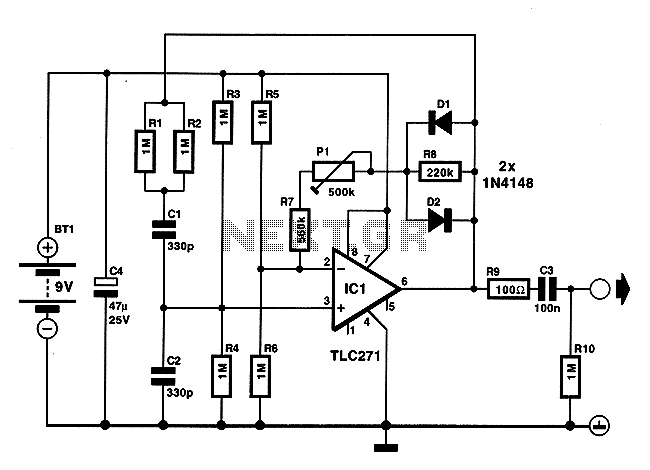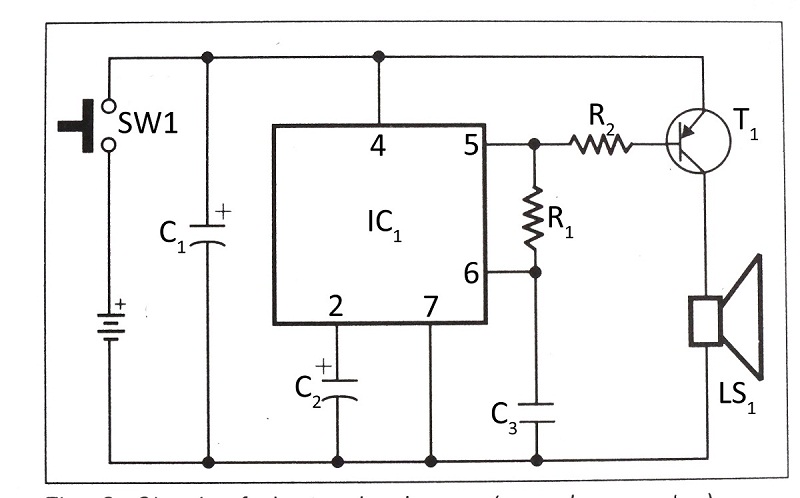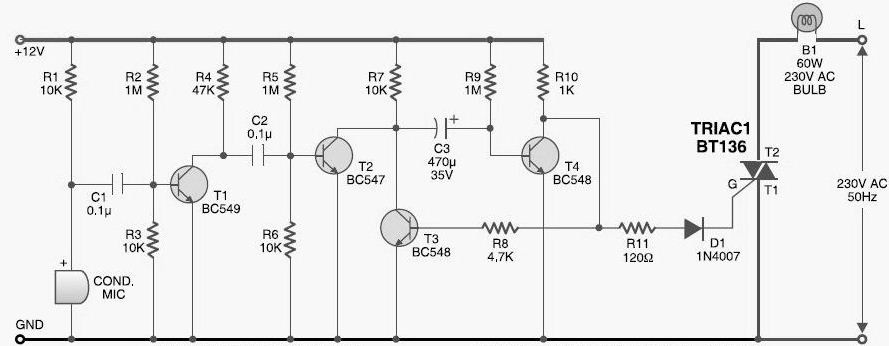
sound generator
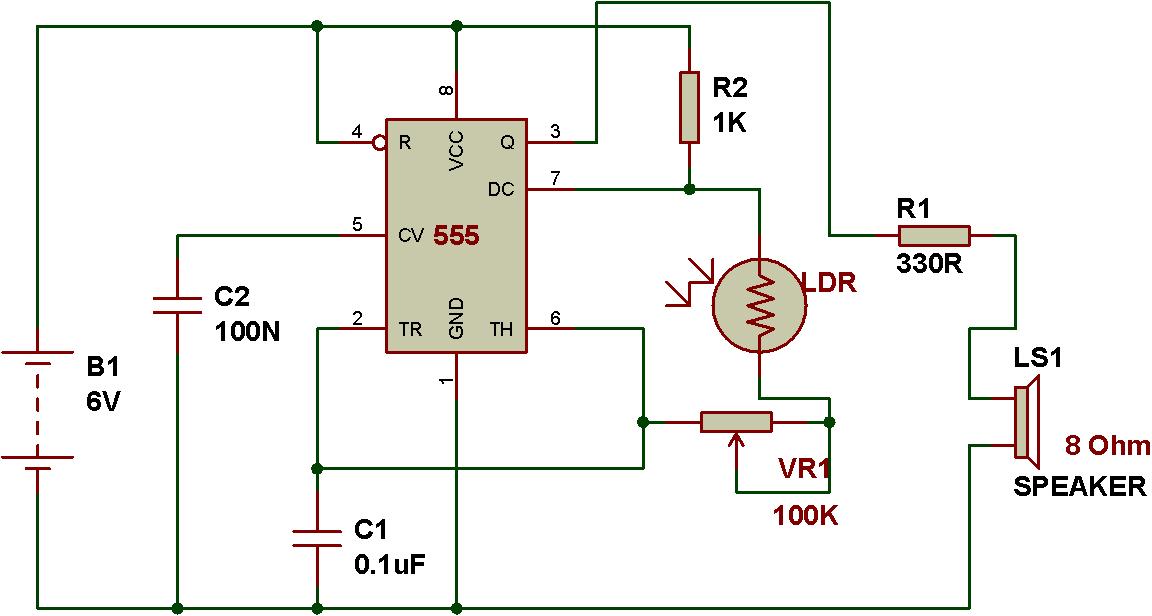
The circuit described operates in astable mode using a 555 timer. Instead of a fixed resistor, a Light Dependent Resistor (LDR) is utilized to provide variable resistance for the 555 timer's operation in astable mode. As the resistance of the LDR changes in response to the amount of light it receives, different sound frequencies are generated. This sound generation logic can also be applied to create a simple toy organ. By pressing different keys (Push to ON switches), the resistance between pins 6 and 7 of the timer changes, resulting in the production of various sound frequencies. The circuit employs a blinking logic to function as a sound generator. The incorporation of the LDR helps illustrate how sound frequency varies with changes in resistance. Thus, a simple toy organ can be constructed using this sound generation principle, allowing for the production of sounds at different frequencies based on the pressed switches.
The described circuit leverages the 555 timer in astable mode to create a versatile sound generator. In this configuration, the 555 timer continuously switches between its high and low states, generating a square wave output. The frequency of this output is determined by the resistances connected to pins 6 and 7, as well as the capacitor connected to pin 2. By replacing the fixed resistor with an LDR, the circuit becomes responsive to ambient light levels. The LDR's resistance decreases as light intensity increases, leading to a higher frequency output, while a decrease in light results in a lower frequency output.
In this design, the toy organ functionality is achieved by integrating multiple switches that serve as keys. Each switch, when pressed, modifies the resistance across the 555 timer's threshold and trigger pins, thus altering the frequency of the output sound. The sound produced can be further shaped by adjusting the capacitor value, which, in conjunction with the LDR, allows for a range of audible tones.
The application of this circuit extends beyond educational purposes; it can be a foundational project for understanding the principles of sound synthesis, resistance variation, and the functionality of the 555 timer in various configurations. The use of an LDR not only enhances the learning experience by demonstrating real-time interaction with light but also provides a hands-on approach to exploring the relationship between resistance and frequency in electronic circuits.Circuit given below is configured on astable mode of operation. In place of a fixed resistance, LDR has been kept for getting variable resistance for the 555 timer to work in astable mode. Now, as the resistance increases or decreases in accordance to the light falling on LDR, we hear sound of different frequencies.
The logic of sound generator u sing 555 can be used to make a simple toy organ. As we press different keys (Push to ON switch), the resistance between pin 6 and pin 7 varies and that produces sound of different frequencies. Here, you can see that the logic of a blinker has been used to make a sound generator. Use of LDR makes us easier to understand that the sound frequency varies according to the resistance variation in LDR.
We can make a simple toy organ using the logic of sound generator. As we press different switches, the output frequency of the circuit varies and it produces sounds of different frequencies. 🔗 External reference
The described circuit leverages the 555 timer in astable mode to create a versatile sound generator. In this configuration, the 555 timer continuously switches between its high and low states, generating a square wave output. The frequency of this output is determined by the resistances connected to pins 6 and 7, as well as the capacitor connected to pin 2. By replacing the fixed resistor with an LDR, the circuit becomes responsive to ambient light levels. The LDR's resistance decreases as light intensity increases, leading to a higher frequency output, while a decrease in light results in a lower frequency output.
In this design, the toy organ functionality is achieved by integrating multiple switches that serve as keys. Each switch, when pressed, modifies the resistance across the 555 timer's threshold and trigger pins, thus altering the frequency of the output sound. The sound produced can be further shaped by adjusting the capacitor value, which, in conjunction with the LDR, allows for a range of audible tones.
The application of this circuit extends beyond educational purposes; it can be a foundational project for understanding the principles of sound synthesis, resistance variation, and the functionality of the 555 timer in various configurations. The use of an LDR not only enhances the learning experience by demonstrating real-time interaction with light but also provides a hands-on approach to exploring the relationship between resistance and frequency in electronic circuits.Circuit given below is configured on astable mode of operation. In place of a fixed resistance, LDR has been kept for getting variable resistance for the 555 timer to work in astable mode. Now, as the resistance increases or decreases in accordance to the light falling on LDR, we hear sound of different frequencies.
The logic of sound generator u sing 555 can be used to make a simple toy organ. As we press different keys (Push to ON switch), the resistance between pin 6 and pin 7 varies and that produces sound of different frequencies. Here, you can see that the logic of a blinker has been used to make a sound generator. Use of LDR makes us easier to understand that the sound frequency varies according to the resistance variation in LDR.
We can make a simple toy organ using the logic of sound generator. As we press different switches, the output frequency of the circuit varies and it produces sounds of different frequencies. 🔗 External reference

